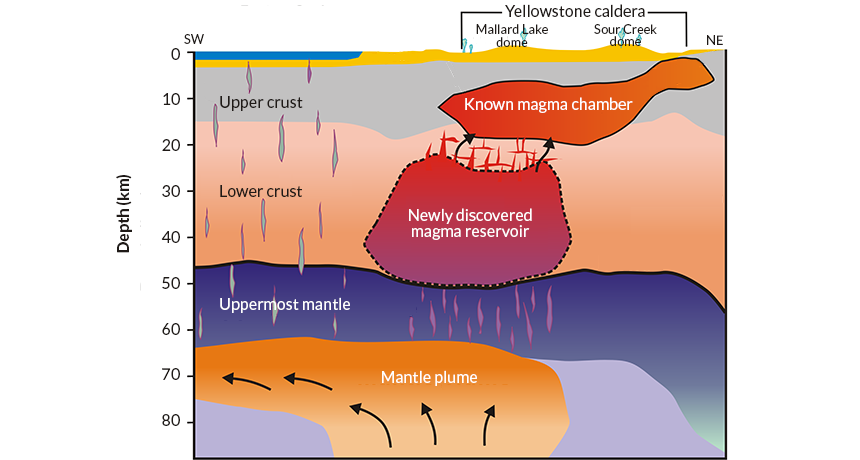Massive magma pool found deep below Yellowstone
Discovery explains why supervolcano exhales so much carbon dioxide, but doesn’t up risk of eruption

HOT STUFF Scientists have spotted a massive magma reservoir buried deep inside the Yellowstone supervolcano, connecting the mantle plume that fuels the volcanic system to a smaller magma chamber closer to the surface.
H.-H. Huang et al/Science 2015






